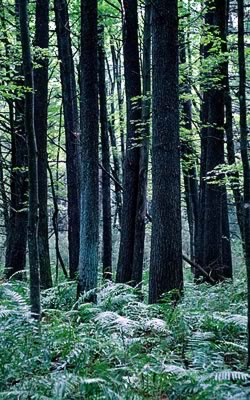Owen-Teal Forest

Site Description
This site covers a forested area from north and east of Lake Owen to the forest south of Teal Lake on the Chequamegon-Nicolet National Forest. A high, relatively flat ground moraine is found in the south, with moraine and large lakes farther north. The most important feature is the extensive tracts of old conifer forest, extensive conifer wetlands and dry pine-oak forest that still remain. Much of the forest lies in low areas between ridges and along southwest flowing streams. Some of the uplands are in a similar old growth condition with patches of hemlock and white pine mixed with mature hardwoods, including the entire Porcupine Lake Wilderness Area. In places, the uplands have been managed for early succession forest trees mostly aspen, pole-sized sugar maple, and white birch. Also present are alder thicket, open bog, muskeg, small patches of old red pine forest, floodplain forest, and upland openings.
Ornithological Importance
Small numbers of red-shouldered hawk and cerulean warbler are found around Lake Owen. The extensive upland and lowland conifer forests support many neotropical migrants including olive-sided flycatcher, yellow-bellied flycatcher, Swainson’s thrush, Cape May warbler, Canada warbler and especially large numbers of veery, blue-headed vireo, golden-winged warbler, Nashville warbler, Blackburnian warbler, Magnolia warbler, pine warbler, and mourning warbler. Also found are American bittern, black-backed woodpecker, boreal chickadee, gray jay, Connecticut warbler, purple finch, red crossbill, and white-winged crossbill.
Photo Credit: Thomas Meyer
